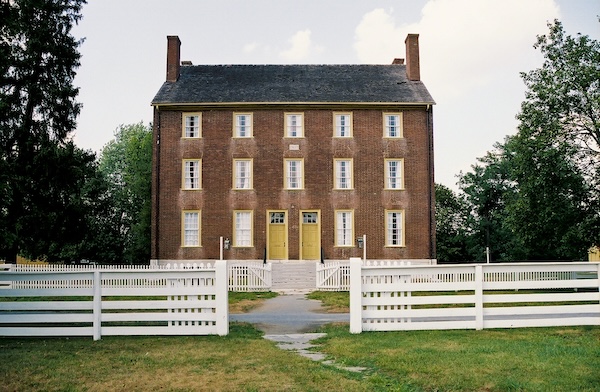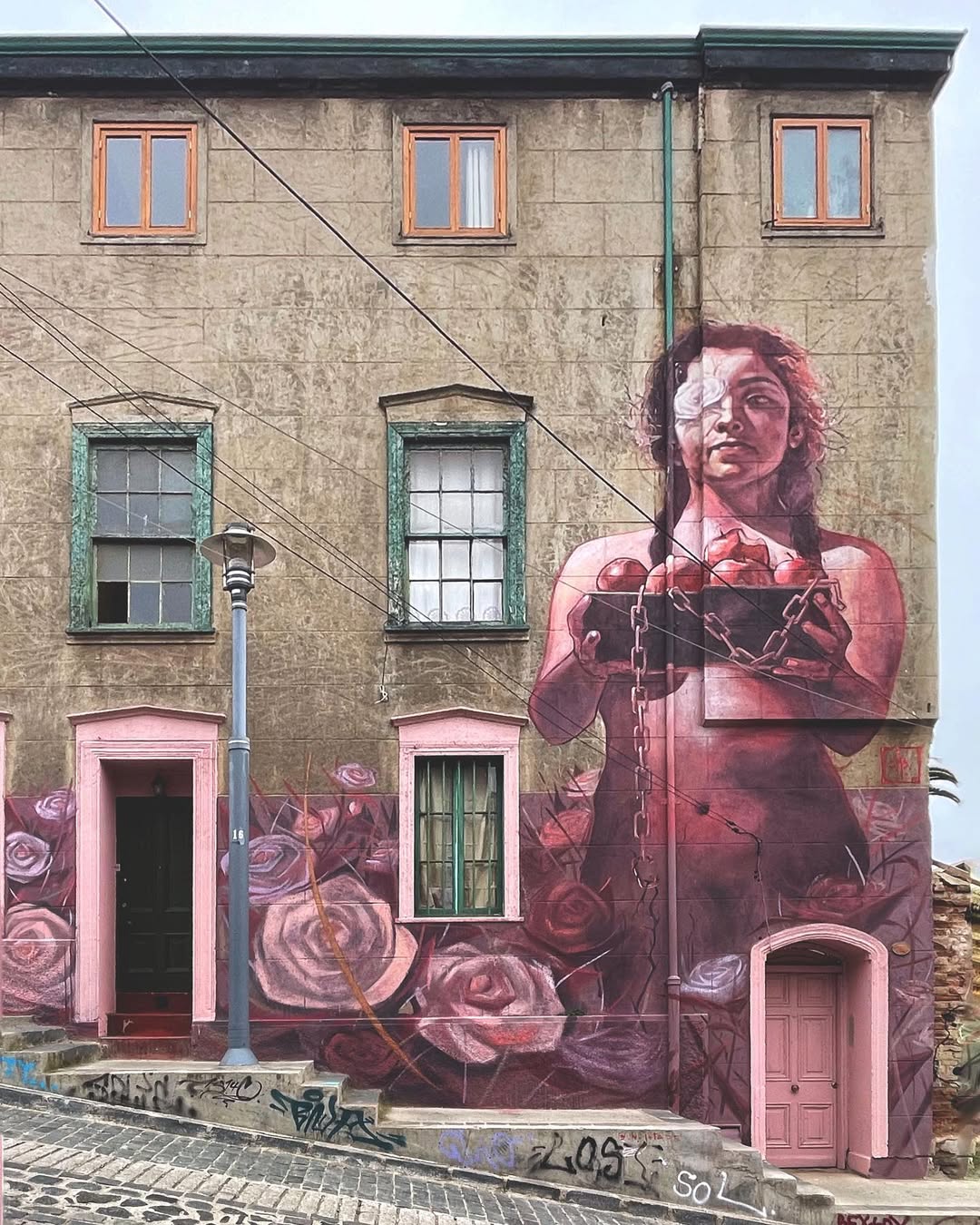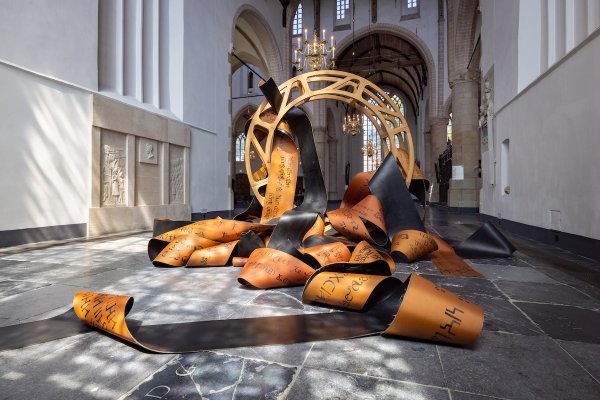
‘...But the Night Shineth as the Day...’
To this day I feel privileged and thankful that my husband and I received Canadian artist Russell Mang’s Under a Cobalt Sky watercolor as a wedding gift back in 1992. We had met while studying at Regent College in Vancouver, BC, Canada, and a group of friends threw us a shower at which they presented us with favorite poems and this awe-inspiring piece of art. The lines from Irish poet Michael O’Siadhail’s love poem ‘Out of the Blue’ come to mind just now as I write: "Suddenly in the commonplace that first amazement seizes me all over again... subtle jazz of the new familiar..." I feel that way about my marriage; I feel that way about this painting that has been a steady and refreshing presence in the deserts of the Southwest and in the spiritually desolate times we encountered. There is much to be said for a wedding gift of true art.
While the first thing that strikes the viewer about this piece may be the mysterious and almost heartbreakingly pure cobalt blue of the sky, the second is probably the solid black mountain in the center right background with its edges so defined and backlit that it looks almost like a collage-mountain cutout. And yet at its base, where it meets the sea, its definition melts into a greyish-white area like a wild, exuberant surf. Around the mountain summits there is a backwash effect moving upward from lighter to darker blue, highlighting the solid form beneath in cloudy halos of light and creating even more movement high above the waves. In the sky to the left of the mountain a shallow, soft-edged vee of white begins to develop into the sense of a giant whale playfully diving into the background. Watercolor blossoms of faint stars appear above the whale’s tail. There also seems to be a mysterious and light-filled world beyond the sea and mountain, an anticipation of even more awe hidden behind what’s visible. Maybe the Northern lights... This is an ‘abstract’ painting with more than a hint of magical realism, and yet for anyone who has visited or lived in Vancouver, an almost perfect expression of its particular beauty.
Steady and solid across the bottom of the piece, except for the lower righthand corner that with uneven edges mimics the deckle-edged watercolor paper, is a long rectangle of cobalt sea about two and a half centimeters high. Its top edge is perhaps a millimeter-wide straight line of vermillion red added over the blue. And above it is a line of plain white paper in the same small width, separating the painting above from the painted rectangle below. Just a very little red has seeped here and there into both the landscape above and the water below. The whole effect is of a sheet of light reflected on the water. It is an unbroken, solid base, drawing the whole scene together, underlining the movement of wave and light above that play at the edges of the watercolor’s other solidity, the silhouetted mountain.
Genesis 1:1-10 and Psalms 8, 19, and 139 are excellent accompaniments to this painting; it is a painting of praise. Even Job beautifully pertains. In Job 3:2-9 there is a negative image of the expression of awe expressed in Mang’s piece, as Job curses the day of his birth in the face of the overwhelming catastrophe that has overtaken him and his family. It is an admittedly reverse version of what Job eventually comes to see as unequivocally positive and deeply humbling, when the Lord finally arrives with perfect timing and radically responds to Job’s questions with his own illusion-shattering interrogation. Imagine the Job 3 passage turned inside-out, upside-down, and you’ll catch more than a glimpse of the awe-awakening passages at the end of the book, beginning with Job 38:2, “Who is this that darkens counsel by words without knowledge?” After living with this painting for many years, I have at least an inkling of what it might be like to hear the morning stars singing together (Job 38:7).
God re-inspires Job with his questions, strangely paradoxical for their playfulness and their power. Not to mention the image of Leviathan in chapter 41! And Under a Cobalt Sky begins to limn these holy questions with refreshment, vigor, and even whimsy.
There was a ‘first amazement’ at this painting when we received it as a wedding gift. Now it has come to be a steady, blessed reminder for me, for us, of the joy of ‘abiding in awe-filled attention’, a welcome discipline amidst the changes and chances of this life.
**********
Russell Mang: Under a Cobalt Sky, 1989, watercolor on paper, 71 x 25 cm.
Russell Mang (1958) was born in Melville, Saskatchewan, Canada, and graduated from the University of Regina in 1982 with a Bachelor of Fine Arts degree. From an early age Russell explored a natural aptitude for watercolors and was self-taught in that medium. He began his professional career in 1982-83, starting out with watercolor landscapes, preferring to work on location whenever possible and eventually moving to Vancouver. The loss of his father in 1988 saw him developing a deeper, more meditative approach to art-making and subject matter. Unlike his early prairie landscapes, which were attempts to record an emotional response to the land, his BC landscapes became a ‘vocabulary’ to speak of and describe an inner journey of a spiritual and meditative nature. In the course of experimenting with other mediums he developed a much more deliberate approach to color, unlike the mostly intuitive approach he was used to. The artist’s soft pastels were especially helpful in beginning to understand what he has called ‘color mechanics’, the manner in which colors interact and influence each other. He and his wife have since lived in Calgary and returned home to Saskatchewan, now residing in Moose Jaw. He also returned to his first love, the prairie landscape, exploring close and more intimate views as well as sweeping vistas of sky and earth, working in acrylics and re-exploring oils.
Libbie Weber is an Anglican priest at The Fellowship of St. Barnabas, Albuquerque, New Mexico, USA, and often likes to use works of art as the basis for sermons and retreats. She is a recently-trained docent at the Albuquerque Museum and is working toward her Certificate in Formative Spirituality at the Epiphany Academy, Pittsburgh, PA, USA, founded by the Dutch Catholic priest and theologian Adrian van Kaam and his longtime colleague Dr. Susan Muto.
%20(1).png)












